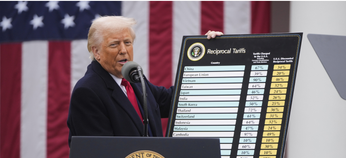
A modest proposal to kick-start the economy — bring back the gulag
The ongoing ‘Sovietization’ of the Russian economy is not just reflected in price caps on food. This week the government — which is struggling with a chronic labor shortage due to border closures — revealed it is looking to bring back Soviet-era gulag prison camps to provide the manpower for large-scale infrastructure developments. The first project to use convict labor is set to be one of the most notorious slave labor projects from the Stalin-era: the Baikal-Amur Railroad (BAM) in the Far East.
- Sometimes, decisions in Russia are taken quickly. The idea of using prisoners to work on infrastructure projects was first mooted at the end of April in a meeting with Deputy Prime Minister Marat Khusnullin (he oversees construction). By the end of May, state-owned Russian Railways was already preparing the first group of 600 convicts to be sent to work on upgrades and maintenance on the BAM.
- The government needs prisoners to take up the slack after thousands of migrant workers from Central Asia headed home during the pandemic. Construction Minister Irek Fayzullin has said he needs another 600,000 workers and is concerned there will not be enough labor available for a post-pandemic building boom.
- The speed of the decision — and Fayzullin’s worries — are caused by one thing: the pressure to implement President Vladimir Putin’s infrastructure projects that are slated for massive state funding (6.3 trillion rubles or $85 billion, according to a 2019 plan). At the moment, this is the only idea (apart from possible new taxes) that the government has to try and ensure the Russian economy meets its target of 3 percent annual growth.
- The first project chosen for convict labor is rich in unintended symbolism. BAM runs thousands of kilometres over permafrost and was planned as an alternative to the Trans-Siberian railroad in case of conflict on the Chinese border. The first attempt to lay tracks in the 1930s became one of the biggest projects tackled by Stalin’s gulag prison camp system. In 1938 alone, there were 250,000 convicts working on the line and official figures show that 40,000 died of starvation and illness in the space of five years. Even so, the railroad was not finished until several decades later and after Stalin’s death, when the final kilometers were laid by contracted workers.
- While the state does everything possible to airbrush the repression of the 1930s from public consciousness, the gulag system remains one of the darkest moments of Russian history. Amid the new decision to use convict labor, modern propaganda outlets have rushed to explain why gulag weren’t so bad after all. State media agency RIA Novosti published a column entitled “The gulag is coming back to Russia”, in which the author unashamedly espoused the positives of Stalinist forced labor. It’s worth quoting a whole chunk of the text by Viktoria Nikiforova: “For the intellectuals in the big city, life in camp dormitories may have been a nightmare… But for poor peasants, for the urban proletariat, for the homeless children who literally starved every day of their lives, a labor camp promised three meals a day, a warm bed and some kind of medical care. Back in the late Soviet era, our affluent urban philistines were contaminated with an enduring disgust for physical labor and today this has reached almost pathological proportions. Meanwhile, there is no better remedy for the blues, no better cure for a sense of helplessness, than good old hard graft.” The column provoked such an angry reaction that, within a couple of days, RIA Novosti had to change the headline. But the text itself remained unaltered.
Why the world should care
The speed with which Russia is resurrecting its Soviet past is frightening. Once again, nobody is learning from history. Aside from anything else, the gulag was deeply inefficient (like any slave labor system) and the centrality of this flawed system to the Stalinist economy became a major reason for the long economic crisis that led to the collapse of the Soviet Union.



PAID SUBSCRIPTION LAUNCH
From May 1, 2025, The Bell in English will no longer be free
From May 1, 2025, all The Bell’s newsletters and online content will be behind a paywall. We have taken this decision so that The Bell can remain financially independent, and maintain our high standards of journalism and economic expertise






